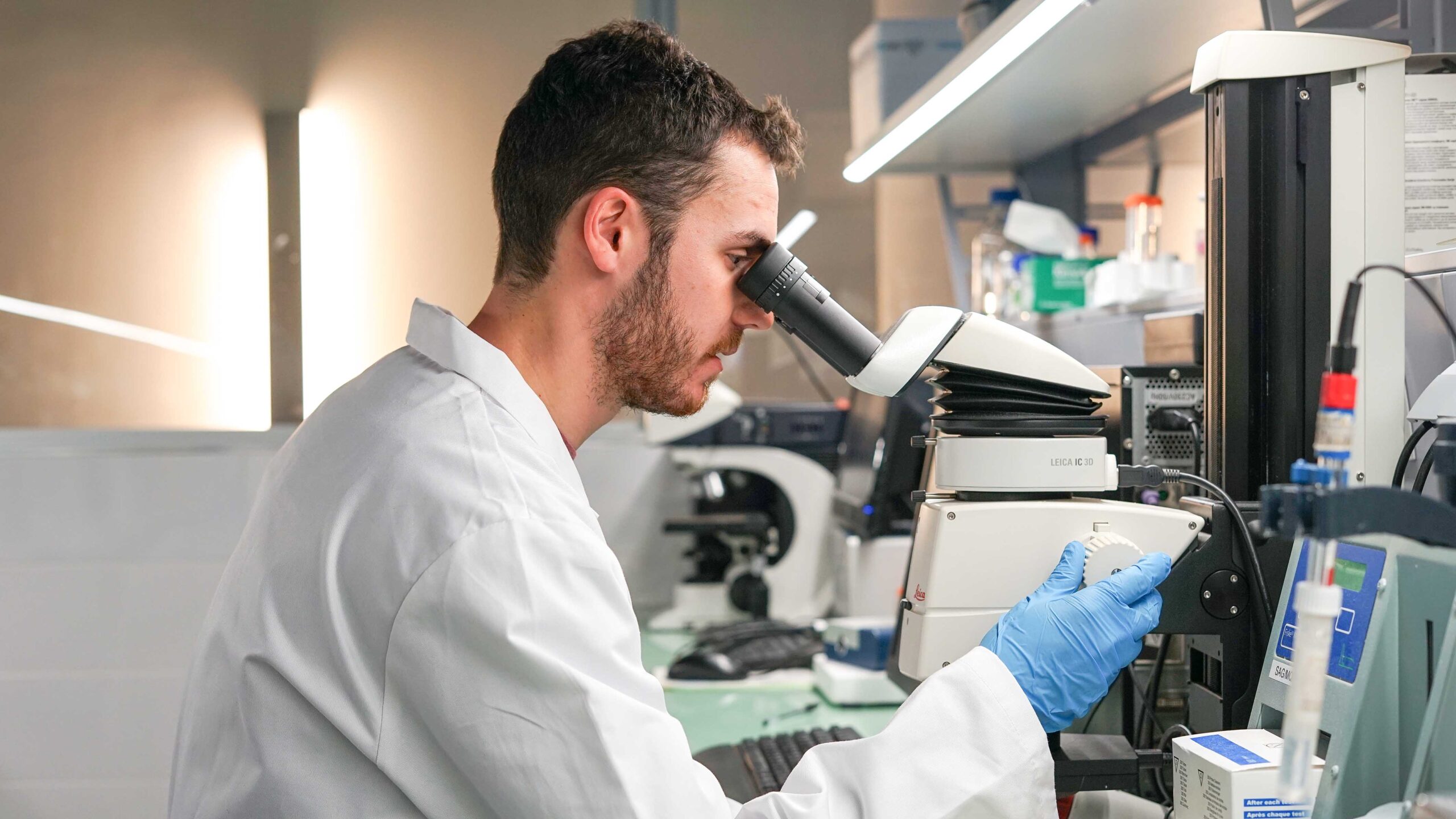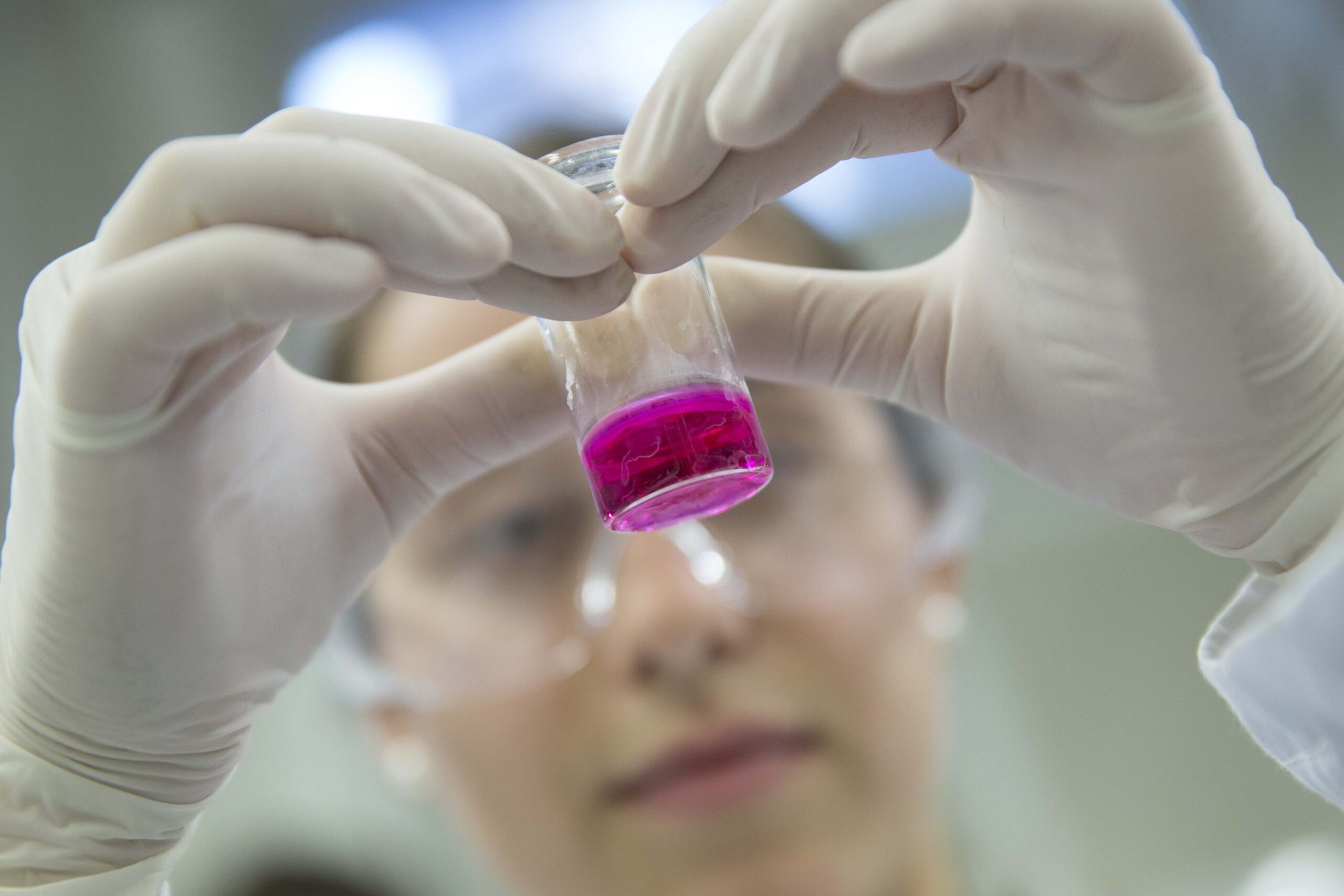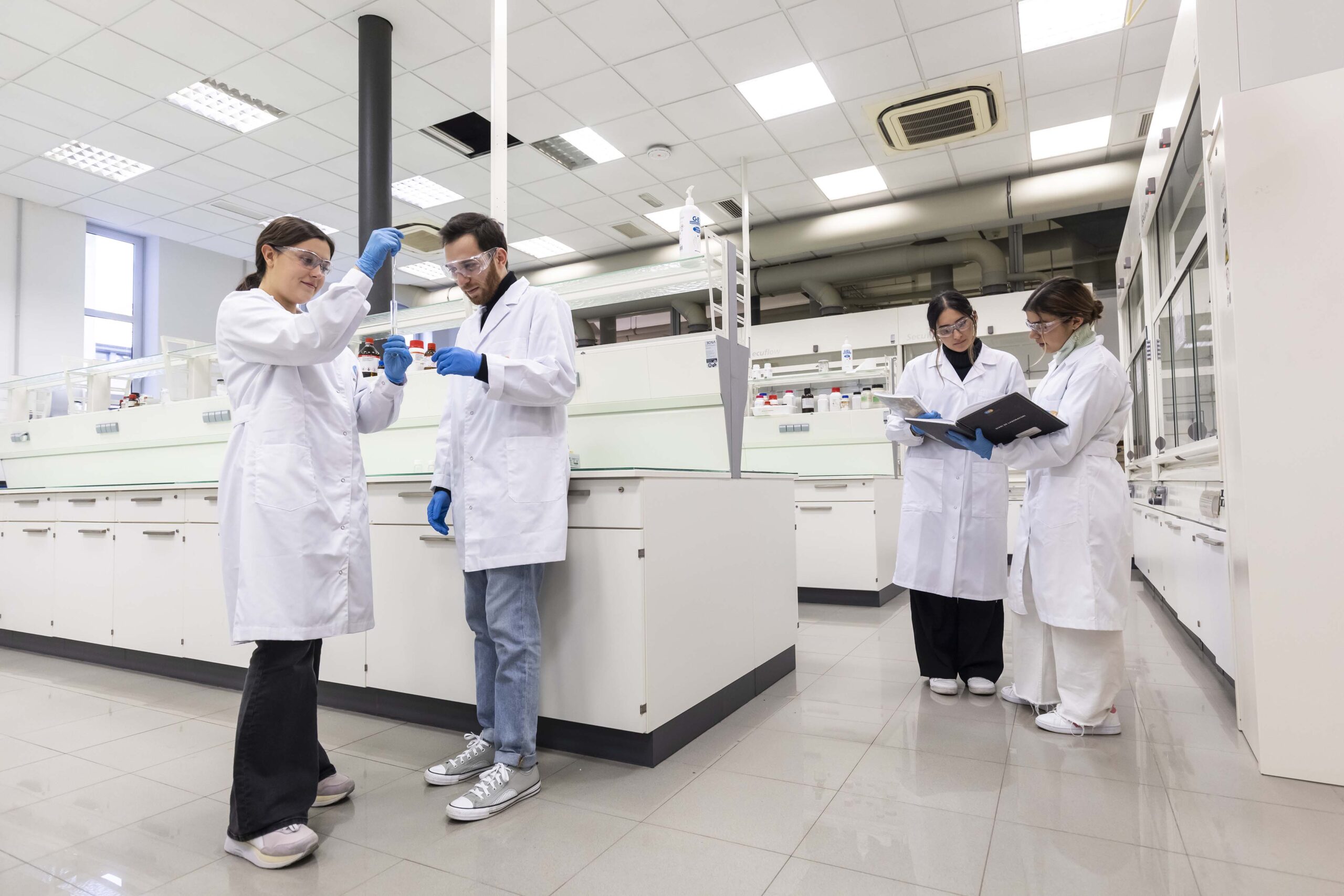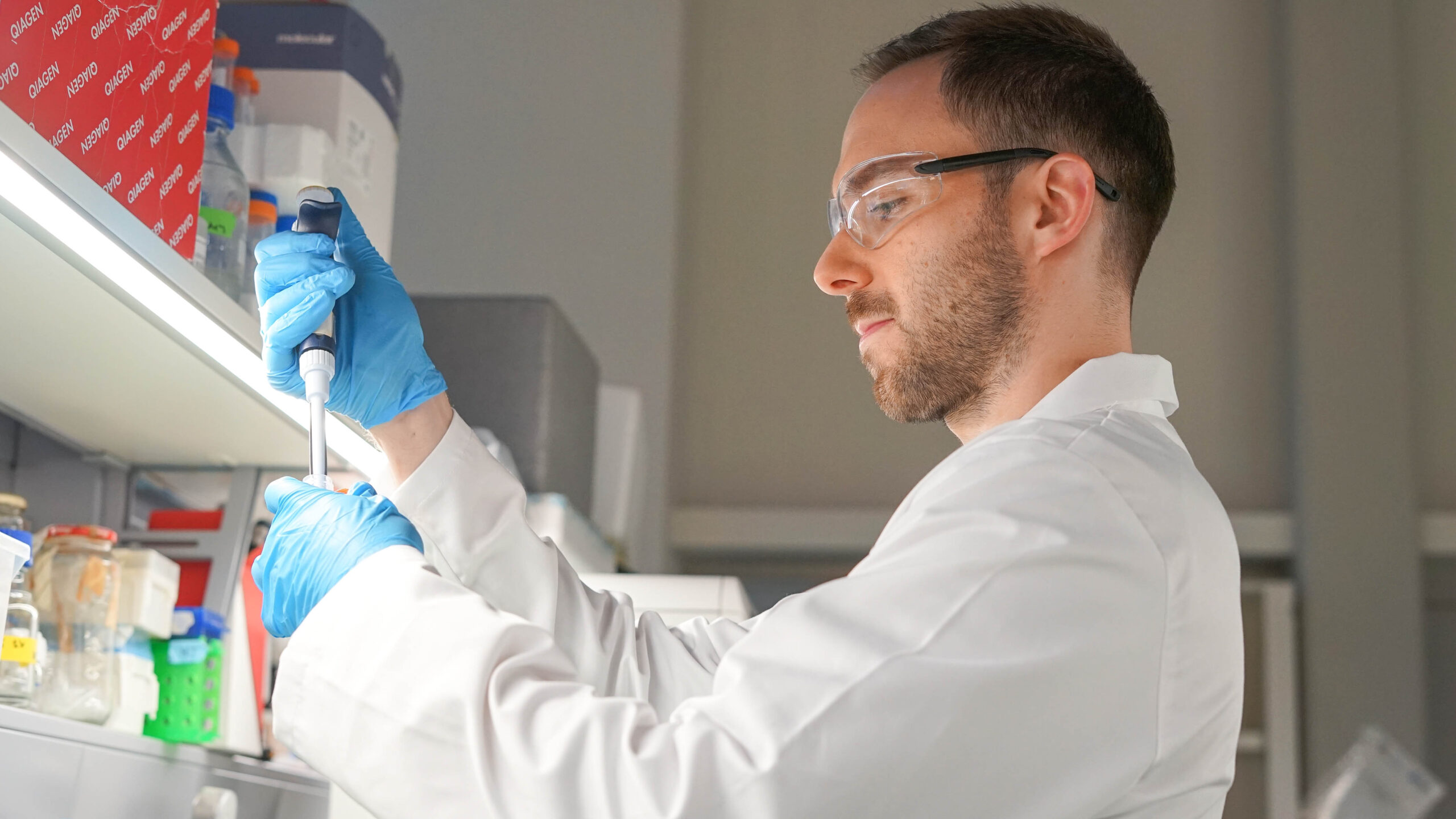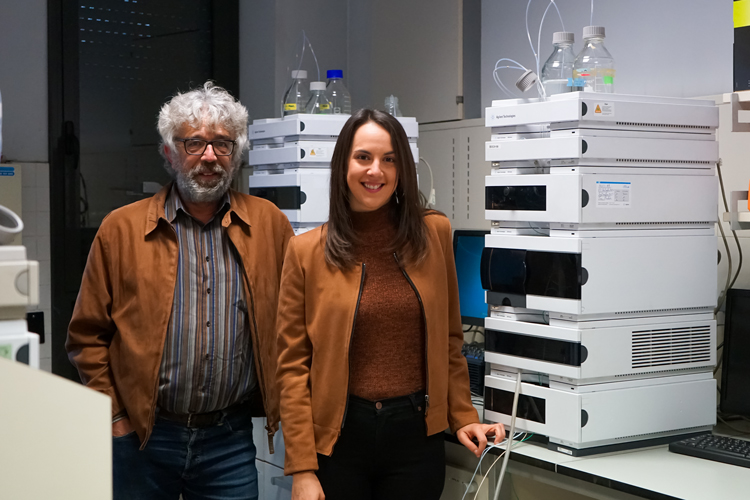Dr Laia Grifoll defended her doctoral thesis where she broadens her knowledge of CE4 enzymes, contributing to the exploitation of chitin and peptidoglycan deacetylases as biocatalysts and as therapeutic targets against fungal and bacterial infections respectively.

Dr Antoni Planas and Dr Laia Grifoll
The alarming growth of antibiotic-resistant pathogenic microorganisms requires new therapeutic targets to be sought in order to combat infectious diseases that manage to evade current antimicrobial treatments.
Peptidoglycan is one of the main components of the bacterial cell wall. Its functions include determining the shape of the cell, preserving the cell's integrity, and taking part in the growth and cell division processes. Given that it is exclusively present in almost all bacterial cell walls, peptidoglycan acts as an excellent pathogen-associated molecular pattern (PAMP), recognised by its eukaryotic receptors in pathogenic infections.
Pathogenic bacteria use post-synthetic modifications of the structure of their peptidoglycan as a strategy to evade the host’s immune system. One example of these modifications is the desacetylation of the residues that make up the peptidoglycan, N-acetylmuramic acid (MurNAc) and N-acetylglucosamine (GlcNAc), which are catalysed by peptidoglycan deacetylases, a type of enzyme that belongs to carbohydrate esterase family 4 (CE4). These deacetylases have been proposed as new antibacterial targets, given that inhibiting these enzymes may represent a promising pathway for the development of new antibiotic therapies.
In spite of having this potential as therapeutic targets, scarce information is available about peptidoglycan deacetylases, with a small number of characterised enzymes.
Additionally, certain peptidoglycan deacetylases are also active in other substrates, such as chitin and chitosan. Chitosans and chitosan oligosaccharides (COS) are bioactive molecules with a variety of known and potential applications in several fields. There is a growing interest in the development of enzymatic approaches for the production of chitosan oligomers with a defined structure to evaluate their biological functions and to develop new applications, with the CE4 family of enzymes presenting great potential for use as biocatalysts.
As part of the Nano3Bio project of the European consortium, Dr Laia Grifoll recently defended her doctoral thesis entitled “Chitin and peptidoglycan deacetylases: Discovery, characterization and engineering”, conducted within the Chemistry and Biotechnology Research Group (GQBB) at IQS, supervised by Professor Dr Antoni Planas, Director of the Biochemistry Laboratory of the Bioengineering Department at the IQS School of Engineering.
Chitin and peptidoglycan deacetylases
One of the main objectives of the European project Nano3Bio was the development of biotechnology strategies, including biocatalysis and synthetic biology, to obtain these oligomers with defined acetylation patterns.
Aiming to broaden the knowledge available about the specificity of chitin and peptidoglycan deacetylases in different substrates as well as the sequential and structural characteristics that determine these specificities, the thesis reports the exhaustive characterisation of the PdaC peptidoglycan deacetylase of the microorganism Bacillus subtilis (BsPdaC), as well as the selection and characterisation of new enzymes from the CE4 family.1,2
In addition to the kinetic and biochemical characterisation of the enzyme, in collaboration with the Structural Biology Laboratory of CIC bioGUNE in Bilbao, this research has also determined the crystallographic structure of PdaC.3 The structural comparison with canonical desacetylases of MurNAc and GlcNAc has led the researchers to propose that PdaC is the first member of a new subclass of MurNAc desacetylases based on its differential functional and structural characteristics, whose biological functions are still unknown. The characterisation of the first member of this subfamily opens the doors to their functional evaluation as a potential therapeutic target against pathogenic microorganisms.
Moreover, the research has sought new enzymes from the CE4 family based on a phylogenetic and bioinformatic analysis of the family, identifying four new proteins as potential chitin desacetylases which could present new patterns of action. Furthermore, they have proposed a protein from the microorganism Bacillus cereus as a new peptidoglycan deacetylase for further characterisation.
The results of this research, which broaden the knowledge available concerning the specificity and mode of action of enzymes from the CE4 family and which have identified new candidate enzymes to be characterised, will contribute to the use of chitin and peptidoglycan deacetylases as biocatalysts and as therapeutic targets against fungal and bacterial infections, respectively.
This thesis has been supported by the European project “European Union’s Seventh Framework Programme for research, technological development and demonstration” under grant agreement number 613931 (NANO3BIO) and the grant BFU2016-77427-C2-1-R from Ministerio de Economía y Empresa from Spain.

1 L. Grifoll, S. Pascual, H. Aragunde, X. Biarnés, A. Planas;
Chitin deacetylases: structures, specificities, and biotech applications, Polymers 10, 352 (2018).
2 A. Aranda-Martinez, L. Grifoll-Romero, H.Aragunde, E. Sancho-Vaello, X. Biarnés, L. Vicente Lopez-Llorca, A. Planas; Expression and specificity of a chitin deacetylase from the nematophagous fungus Pochonia chlamydosporia potentially involved in pathogenicity, Scientific reports, vol.8 (2018).
3 L.Grifoll-Romero, M.A. Sainz-Polo, D. Albesa-Jové, M.E. Guerin, X. Biarnés, A. Planas ; Structure-function relationships underlying the dual N-acetylmuramic and N-acetylglucosamine specificities of the peptidoglycan deacetylase PdaC from Bacillus subtilis.
Journal of Biological Chemistry 294, 19066-80 (2019)
